

Paris is one of the most loved and dreamed of European capitals by travellers: romantic, elegant, rich in art and history, charming and sophisticated. To visit its boundless museum offerings, its attractions and its many picturesque neighbourhoods, a whole week is not enough.
If you only have a few days to spare, you can still manage to visit at least the most iconic and famous sites to get a complete picture of the city and its beauty.
Obviously, to be able to see everything, you need to plan your daily itineraries very well, make the most of the means of transport and possibly book tickets for the most popular attractions in advance to avoid kilometre-long queues that waste precious time.
To make it easier for you to organise your trip, we have created a modular itinerary based on the days you have available. It is clear that this is a starting point to be customised according to your tastes and needs.

The French capital has 2 main airports, Paris Charles de Gaulle Airport and Orly Airport , both well connected to the city centre by public transport.
To get around Paris and optimise your journey, we recommend using the metro whenever possible. You will have several season ticket options, depending on the number of days of your stay.
Depending on the number of attractions and museums you plan to visit, you can also consider purchasing a Pass, which often includes cruises on the Seine.
With only a few days available, we recommend finding accommodation in the more central districts of Paris. This will allow you to quickly reach all the main attractions without wasting time.
Your first day in Paris is dedicated to the most famous and most photographed icons of the French capital, not to be missed on a weekend along the Seine.

As you get off the metro at the Trocadero stop, you will immediately have a postcard view in front of you: the Eiffel Tower in all its beauty. Indeed, from the terrace of Place du Trocadero, you can admire one of the most famous views of the famous tower, built by Gustave Eiffel for the Universal Exhibition of 1889.
The construction of the Trocadero dates back to the Universal Exhibition of 1937 and includes the Palais de Chaillot and the Gardens below. The vast architectural complex encloses a veritable museum centre with the Musée de l’Homme, the Musée National de la Marine, the Cité de l’Architecture et du Patrimoine, the Musée National des Monuments Français and the Théâtre de Chaillot.
Opposite the Place de Trocadero, the Trocadero Gardens extend: a series of water mirrors and pools create a play of shapes and scenic convergences with the Warsaw Fountain at the centre. This is a large pool with numerous water jets that develop spectacular water features, particularly fascinating at night when illuminated. The gardens are adorned with classical statues, which add an artistic and historical touch to the place, including those by Paul Landowski, a famous French sculptor.

Cross the Seine and you will find yourself at the foot of the Eiffel Tower, one of the most famous architectural structures in the world. At 324 metres high, the tower consists of three levels. The first and second levels house restaurants and shops, while the third level offers a panoramic observation platform. Climbing to the top is an unforgettable experience, with spectacular views over all of Paris.
Advance booking of a ticket to climb the tower is essential: you can choose which level you want to go up to, at what time and the total duration of the visit is about 2 hours.
Buy the ticket from 54,00 €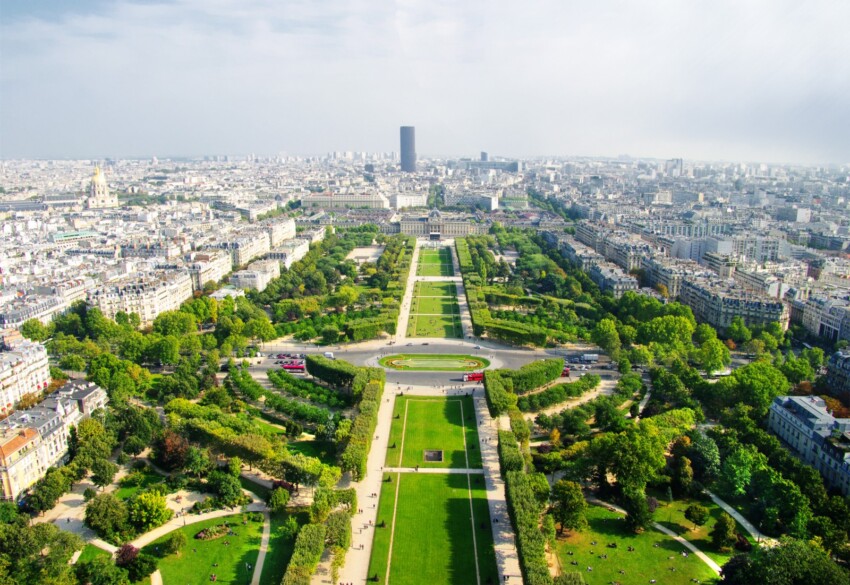
If you have time for an invigorating walk, continue along Champ des Mars. At almost 25 hectares, it is one of the largest green spaces in the capital, stretching from the Trocadéro esplanade to the Ecole Militaire.
It is one of the rare places in Paris that brings together both peace-seeking tourists and Parisians who take advantage of the green spaces to play sports, share a picnic during the summer or accompany their children to the rides.

Using the metro you can then move quickly to another symbolic place in Paris, the Arc de Triomphe, located at Place Charles de Gaulle, where some of the French capital’s most important streets converge.
Built at the behest of Napoleon Bonaparte to celebrate his military exploits, in particular his victory at the Battle of Austerlitz in 1805, the Arc is decorated with reliefs celebrating French victories and beneath it is the Tomb of the Unknown Soldier, with a perennial flame commemorating the fallen of the First World War.
The Arch of Tronfo, with its admirable bas-reliefs, is undoubtedly one of the must-see sights in Paris and was inspired by the Arch of Titus, located in the Forum of Rome.
You can admire its imposing bulk simply from the square, or devote more time to a tour lasting about 1 hour, which will take you to the top: from here you can admire one of the most scenic views of Paris . Indeed, from the top you have an extraordinary view of the twelve avenues radiating out from Charles de Gaulle Square.
Buy the ticket from 16,00 €
From the Arc de Triomphe, walk down another iconic spot in Paris, the Champs Elysees .
The Champs-Élysées is one of the world’s most famous avenues, almost 2 km long and dating back to 1616, built at the behest of Marie de Medici to connect the centre of Paris to the Royal Palace (now the Louvre). It soon became a much-loved place, especially for Marie Antoinette and the nobility, who used to walk along it with their entire court.
Today, the Champs Elysees is undoubtedly the most exclusive area of Paris, where boutiques of the major luxury brands, trendy restaurants, historic cafés, theatres and cinemas are concentrated in what is known as the ‘golden triangle’ between Avenue Champs Elysées, Avenue George V and Avenue Montaigne.
Don’t miss a stop at Ladurée, the most famous pastry shop for macaroons– be prepared for endless queues.

Place de la Concorde is the largest square in Paris and one of the city’s historic sites. Located between the Champs-Élysées and the Tuileries Gardens, the square is known for its Egyptian obelisk from Luxor, which is over 3,000 years old, and its two monumental fountains, the Fontaine des Mersand the Fontaine des Fleuves.
During the French Revolution, the square was the scene of numerous executions, including that of Louis XVI and Marie Antoinette. Place de la Concorde is an ideal stopover to admire the architecture and monuments in the heart of Paris. From here, you can photograph a splendid view of the Tuileries Gardens and the Louvre, the Arc de Triomphe and the Eiffel Tower.

The Galeries Lafayette, located near the Opéra Garnier, is one of the most famous and luxurious department stores in Paris.
Founded in 1894, the Galeries Lafayette are known for their Art Nouveau architecture, with a stunning glass and iron dome dominating the centre of the shop. With their wide range of fashion, beauty and luxury products, Galeries Lafayette is the perfect place to spend time shopping and discovering the latest trends in fashion and design.
Be sure to climb to the top of the rooftop terrace for an incredible view of the city, from where you can see the Eiffel Tower in the distance and the Opéra Garnier nearby. It’s a must-see during the festive season, when the Galeries Lafayette are decked out in sophisticated Christmas decorations and wonderful themed window displays are set up.
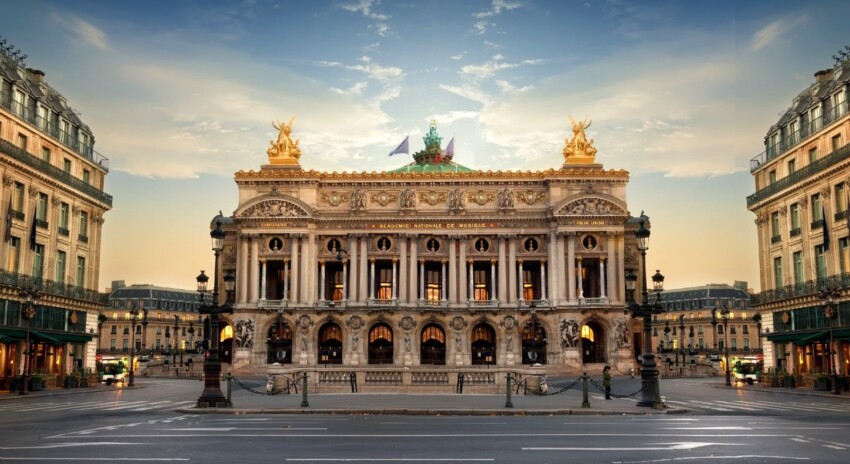
The Opéra Garnier, opened in 1875, is one of the most beautiful and sumptuous opera houses in the world.
Designed by Charles Garnier, the theatre’s architecture is an admirable example of the Beaux-Arts style, with richly decorated interiors, a grand marble staircase, gilded foyers and a magnificent auditorium with a ceiling painted by Marc Chagall, a modern masterpiece that contrasts wonderfully with the theatre’s decoration.
The Opéra Garnier has inspired numerous literary and artistic works, such as Gaston Leroux’s The Phantom of the Opera.
To admire its marvellous interior, we recommend a guided tour of the theatre, to learn in detail about its history and extraordinary architecture.
Your second day in Paris takes in some of Paris’ most famous and popular attractions: the Louvre Museum and Montmartre.

The Louvre Museum is one of the largest and most famous museums in the world: it houses one of the largest collections of art ranging from antiquity to the 19th century. Some of the most famous works include Leonardo da Vinci’s Mona Lisa, the Venus de Milo and the Victory of Samothrace.
The Louvre itself is an architectural masterpiece: the former Royal Palace of the French monarchy, it boasts a monumental structure dating back to the 12th century and the iconic glass pyramid that serves as the main entrance.
We recommend booking tickets online, possibly well in advance, to avoid long queues, but especially to grab the early morning hours when you will find fewer people crowding the most popular rooms. It is also essential to study an internal itinerary that allows you to quickly identify the most famous works, concentrating on the sections of greatest interest. In fact, the museum is immense and it is practically impossible to visit it in its entirety, so choose the works you want to admire and create your own itinerary. Allow a whole morning to admire the great works of art of history.
Buy the ticket from 22,00 €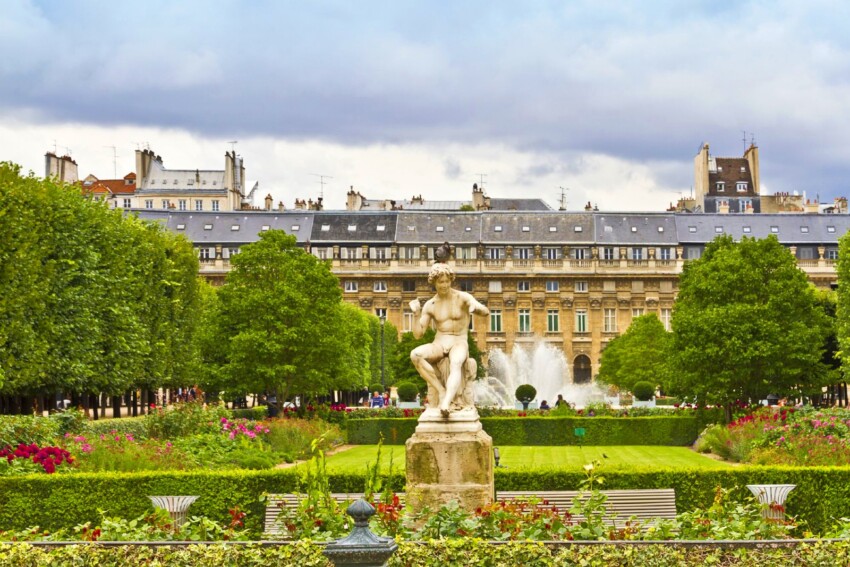
Before the Palace of Versailles was built, royal families lived here in the heart of Paris. Today, the Palais Royal buildings house important institutions such as the Council of State, the Ministry of Culture and the Comédie Française theatre.
In the heart of this magnificent architectural complex, you will find a peaceful garden, the Jardin du Palais Royal. It is the ideal place to take a walk in the shade of the lime and chestnut trees, or read a book in front of the central swimming pool.
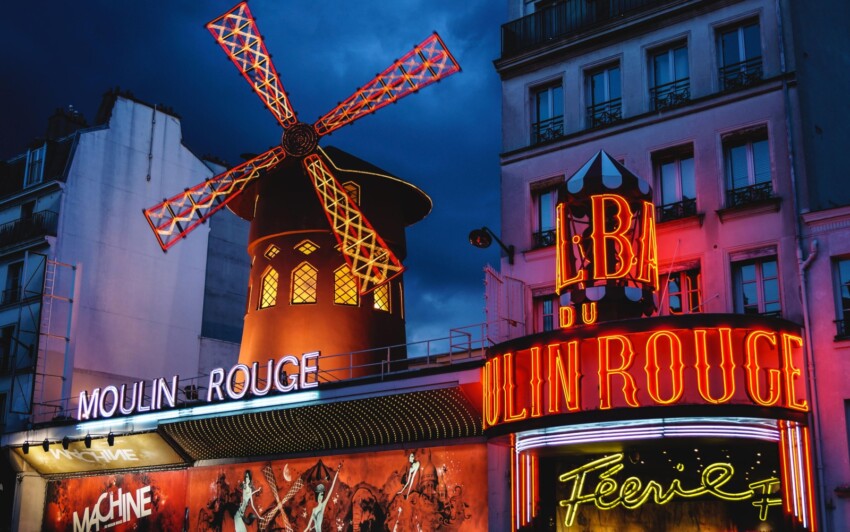
After the rejuvenating scare at the gardens, it’s time to head to one of the most boisterous and flashy areas of Paris, Pigalle, the red light district.
Although the district is known for its cabarets, its showrooms such as the world-famous Moulin Rouge, its sex shops and other nightclubs, Pigalle is a very pleasant neighbourhood to stroll around. In addition to the bars frequented by famous painters such as Toulouse Lautrec, Pigalle is also home to numerous artists’ studios and former Parisian brothels.
In fact, in addition to the numerous red-light sex shops nestled on the district’s main avenues, Pigalle is above all a trendy and electric corner by day and by night, perfect for discovering the latest gastronomic trends or for dancing until late at night.
But the district also offers the chance to visit some minor museums, to relax in its small parks and shady squares, and to immerse yourself in the Paris of yesteryear, of the Roaring Twenties.

Getting to Montmartre from Pigalle is quick. Montmartre is a charming and picturesque district situated on a hill to the north of Paris. It is known for the Basilica of the Sacred Heart, which dominates the city from its elevated position, and for its history from the belle époque days as a centre of bohemian art and culture.
Place du Tertre, with its street performers and open-air cafés, recalls the heyday when artists such as Picasso and Modigliani lived and worked here. Stroll unhurriedly through its cobbled streets, visiting the small shops and art galleries, climb up to the dome of the Basilica for a panoramic view of Paris and seek out the district’s most picturesque corners such as Rue Lepic and Rue Saint-Vincent , two of the most characteristic streets in the neighbourhood, ideal for a stop at one of the many cafés, or Le Mur de Je T’Aime, a large blue-tiled wall where the phrase ‘I love you’ has been written in 250 different languages, or the Maison Rose on Rue de l’Abbrevoir or the last vineyard in Paris.
Don’t forget to walk down the hillside, the less touristy part of Montmartre where you will find the locations of many films, such as The Fabulous World of Amelie.
The third day in Paris is almost entirely devoted to the rive gauche, with picturesque neighbourhoods and exceptional museums.

Located in a former railway station on the Seine, the Musée d’Orsay houses the largest collection of Impressionist and Post-Impressionist works in the world. Among the artists represented are Monet, Manet, Degas, Renoir, Van Gogh, Gauguin and many others. The architecture of the museum, with its large clock and light-filled spaces, is an absolute must-see.
Please remember to dedicate at least two to three hours to visiting the museum. Again, it is essential to buy your tickets online, well in advance, to get in early in the morning. Use a map to focus on the sections that interest you most.
Don’t miss the fifth floor, with its Impressionist works and the panoramic view from the museum terrace, which offers a splendid view of the Seine and Paris.
Buy the ticket from 13,00 €
As soon as you leave the museum, you can head to the nearby Saint Germain-des-Prés neighbourhood, one of the liveliest in Paris, famous for its trendy clubs, postcard-perfect cafés and shops in which to get lost among the shop windows.
Here you can still breathe in its sophisticated aura, which stems from the intellectuals and celebrities who frequented the district in past centuries: from the Encyclopedists who met at Café Landelle or Café Procope to revolutionaries Marat and Danton to poets of the calibre of Jean-Paul Sartre and Simone de Beauvoir.

To rejuvenate after a morning at the museum, you can head to the beautiful Jardin du Luxembourg, one of the most beautiful gardens in Paris, a true piece of paradise and a favourite with tourists and Parisians alike.

Just a stone’s throw from the gardens is the Latin Quarter, one of the most vibrant and charming areas of Paris, known for its universities, cafés, bookshops and bohemian atmosphere.
The Sorbonne, one of the oldest universities in the world, is located right in the heart of the district, home to many important historical and cultural buildings, such as the Panthéon: a huge secular mausoleum housing the tombs of illustrious figures from French history, including Voltaire, Rousseau, Victor Hugo and Marie Curie. The building is a masterpiece of neoclassical architecture, with an imposing dome and interiors decorated with frescoes and sculptures.
Lose yourself in the narrow streets and lively squares that offer a unique and charming atmosphere, filled with cafés, bistros and shops such as Shakespeare and Company, a famous English bookshop that has been a haunt for many famous writers.

In just a few steps you will find yourself in front of the stunning Notre Dame Cathedral, one of the finest examples of Gothic architecture in France.
Built between the 12th and 14th centuries, it is famous for its two towers, gargoyles, and beautiful stained glass windows and was the scene of significant historical events, such as the coronation of Napoleon Bonaparte.
After adevastating fire in 2019, the cathedral underwent extensive restoration. Although not currently open to visitors, the site remains a place of pilgrimage and admiration for crowds of tourists.

Visit the Sainte-Chapelle, also on Île de la Cité, a Gothic chapel commissioned by King Louis IX in the 13th century to house the relics of the Passion of Christ.
It is famous for its spectacular stained glass windows, depicting biblical scenes in an incredibly vivid range of colours. These 15-metre-high windows transform the interior of the chapel into an almost ethereal experience when sunlight streams through them.
We recommend booking tickets online to skip the queue and buying tickets in advance in the hope of finding a sunny day, which illuminates the stained-glass windows and makes for a particularly impressive visit.
Buy the ticket from 20,00 €
Crossing the Seine, head north to end the day in Le Marais, one of the oldest and most charming districts of Paris, characterised by narrow streets, historic buildings and a mix of culture and modernity. It is known for its medieval and Renaissance architecture, as well as being a centre of Paris’ LGBTQ+ community. The district is also home to the oldest square in the city, Place des Vosges, and important museums such as the Picasso Museum and the Carnavalet Museum.
Stroll unhurriedly through its narrow streets, exploring boutiques, art galleries and cafés, and end the evening in one of the neighbourhood’s sophisticated restaurants or picturesque bistros.
With an extra day at your disposal, you’ll be able to take in other Parisian sites worth a visit.
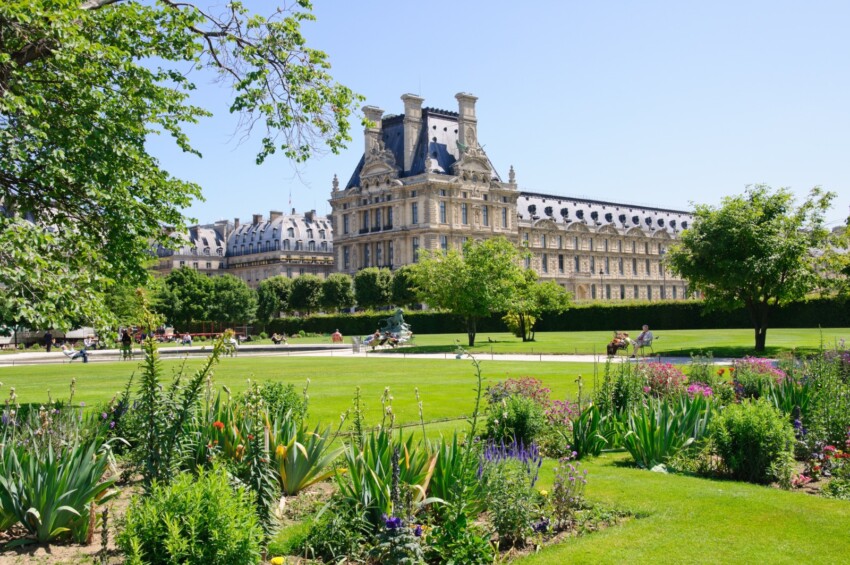
Created at the behest of Catherine de’ Medici in 1567 as a green space in the Tuileries Palace for royal banqueting ceremonies, today the Tuileries Garden is an enchanting corner sheltered from the hustle and bustle of the city.
It houses two important museums: the Galerie Nationale du Jeu de Paume, focusing on contemporary art and photography, and the Musée de l’Orangerie, dedicated to Impressionist and Post-Impressionist painting.
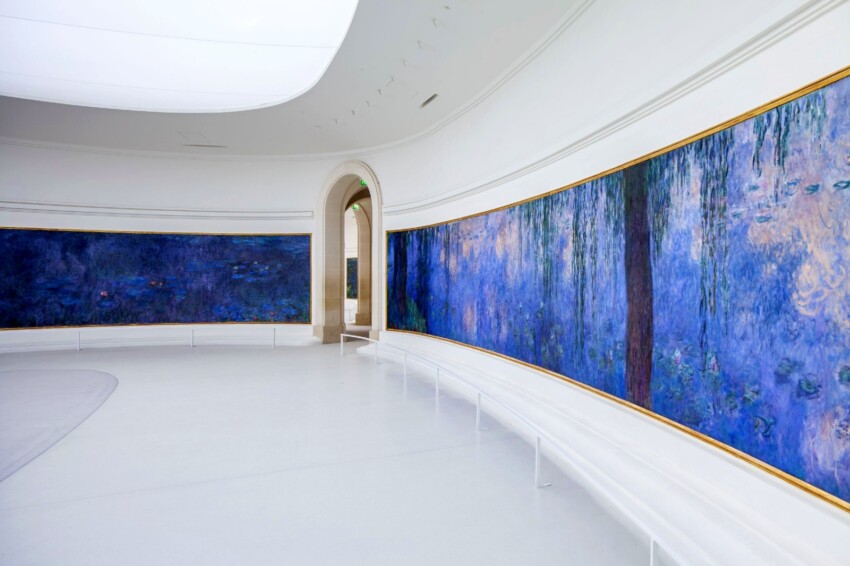
This important museum houses works by great artists such as Monet, Cézanne, Matisse, Modigliani, Picasso, Renoire and Rousseau.
Built in 1852 to a design by architect Firmin Bourgeois and completed by his successor, Ludovico Visconti, the Orangerie boasts a number of impressive works of art, including Monet’s famous Water Lilies.
Buy the ticket from 11,00 €
Head to the Beaubourg district, where the Centre Pompidou is located. This cultural centre houses the National Museum of Modern Art, one of the largest collections of modern and contemporary art in the world.
The building, designed by Renzo Piano and Richard Rogers, is famous for its innovative architecture with colourful tubes and external escalators and houses works by artists such as Picasso, Duchamp and Kandinsky.
If you are not a fan of modern art, you can simply climb to the rooftop, which offers a beautiful view of the city, or take a stroll around the square and the picturesque streets of the neighbourhood.
Buy the ticket from 17,00 €
You can end your afternoon by visiting one of the city’s most special places, the Père Lachaise Cemetery, accessible by metro line 2 or 3, depending on which entrance you choose.
Also known as the Artists’ Cemetery, it is famous for being the eternal resting place of certain cultural and artistic figures, such as Chopin, Oscar Wilde or Jim Morrison of the Doors, whose grave is one of the most visited and a pilgrimage destination for music lovers.
If you love ethnic cuisines, we recommend dining in one of the many restaurants in the Belleville neighbourhood or returning to the Canal Saint Martin, another extremely lively area in the evenings.
If you have a fifth day to spend in Paris, you could consider two excursion options just outside the French capital, the Palace of Versailles or Disneyland Paris. The former can take half or a full day, while Disneyland could take up to two days.
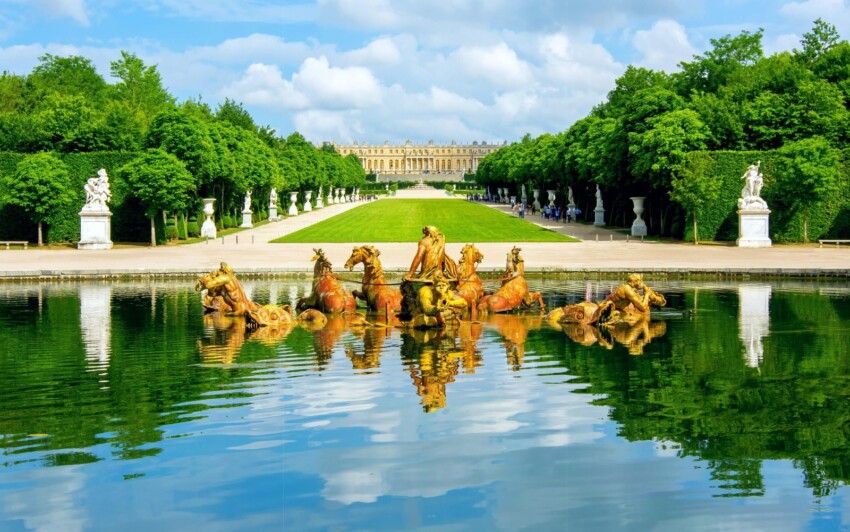
The Palace of Versailles, located about 20 kilometres south-west of Paris, is one of the grandest palaces in the world. Originally built as a modest hunting pavilion, Versailles was transformed by Louis XIV in the 17th century into a royal residence of incredible opulence.
The palace is famous for the Hall of Mirrors, a long corridor with 357 mirrors reflecting the light from arched windows, and for its gardens, designed by André Le Nôtre, a masterpiece of landscaping, with fountains, statues and gushing pools.
For a complete visit, a full day is required. Book tickets in advance to avoid long queues and consider a guided tour to learn more about the history and architecture of the place.
Don’t miss the Grand and Petit Trianon, two additional royal residences on the estate, and the Queen’s Village, a picturesque rural retreat created for Marie-Antoinette.
Buy the ticket from 32,00 €
If you are travelling with children or if you are a big fan of the Disney world, you cannot miss the opportunity to spend a whole day in the most popular amusement park for young and old, Disneyland Paris.
About 30 km from the city, easily accessible from the centre by the RER in 35 to 40 minutes or with the Magic Bus shuttle, Disneyland Paris actually consists of two separate parks: Disneyland and the Walt Disney Studios, for which you need an extra day.
We advise you to preferably choose a midweek day to avoid the endless queues that are created on Saturdays and Sundays, when the park is taken by storm and becomes truly unlivable. Needless to say, even in this case, buying tickets online in advance is essential.
Buy the ticket from 50,00 €Discover Paris through the eyes of expert guides who will take you on a tour of the city's hidden treasures. Participating in a free tour will allow you to capture the true essence of Paris.
The free tours are a viable alternative to traditional guided tours. They work like this: participation is free and at the end of the visit you can leave a tip at your discretion. Below you will find our favourite free tour, otherwise you can see the full list by visiting this page.
City Card allow you to save on public transport and / or on the entrances to the main tourist attractions.
